Total solar eclipse 2024
Back in 2017 we travelled with my partner to the United States for our first total solar eclipse, and it was a great success. I got some nice photos out of it, and the experience was amazing. You can read my blog post about it, although it is only available in Finnish.
The 2017 eclipse left me wanting more, and I started looking at next opportunities to see a total eclipse. Finland will see the next one in 2126, so traveling is unavoidable. Many of the eclipses after 2017 were in very far away and hard to reach places, and the pandemic intervened too. Finally in 2023 we gathered a small group of like-minded friends, and started planning a trip to the United States for the 2024 April 8th eclipse.
Preparations
Based on long-term cloud cover statistics on the Eclipsophile website it seemed like Texas would be the best state to be in on the United States side. The eclipse would be over 4 minutes and 20 minutes long at best. Dallas was pretty close to the center of the path of totality, and there are direct flights from Helsinki to Dallas-Fort Worth, so we pretty quickly locked in on that.
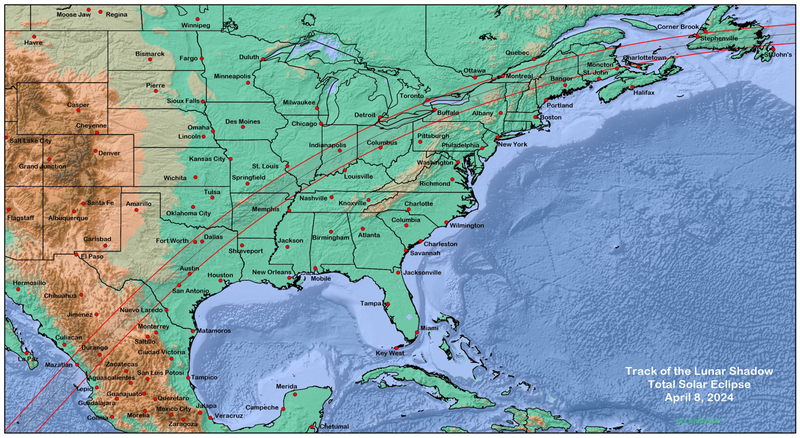
We booked a small house in Grand Prairie for our group through Airbnb and started planning an itinerary for our trip. Our intention was to travel elsewhere in the US too after the eclipse, so we had to figure that out before renting a car. It is nigh impossible to travel in Texas without a car, and we wanted the option of relocating in case of bad weather on eclipse day.
We decided to travel to New York City once the eclipse was over, so we could do some sightseeing for a few days. Hashing out the exact details took some time, and 2 months before the eclipse we still had not booked a rental car. We started looking into it and were woefully late. There were very few rental cars available from the Dallas-Fort Worth airport, and the remaining ones were extremely expensive.
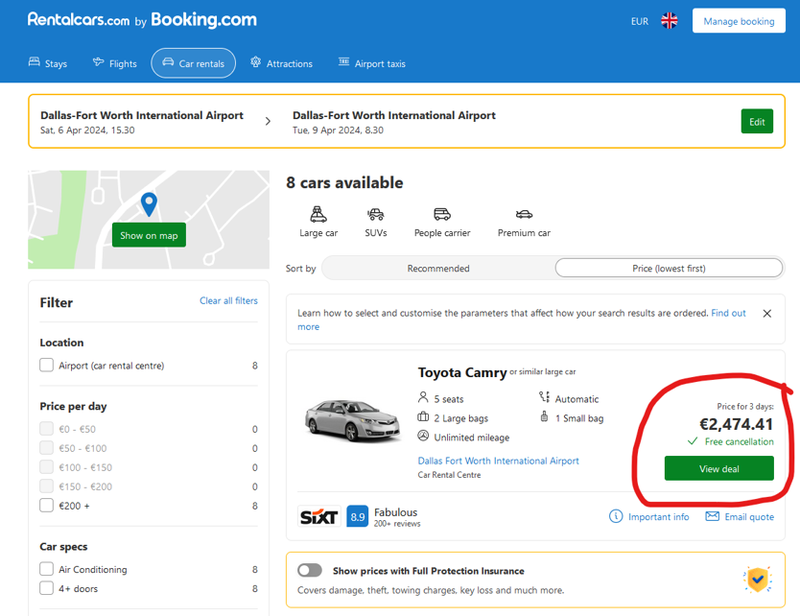
After mucking about with different rental car companies and fiddling with the rental time we luckily were able to get a much better deal on the car and we took it. It’s good to remember you can always book the car for a longer period and return it early. The rent was still much more expensive than normal, but not ghastly anymore.
The journey begins
Our flight to Dallas was leaving around noon on Saturday, and the eclipse was destined to happen on Monday. The weather in Finland was still snowy and cold.
After a nearly 11-hour flight we landed in Dallas-Fort Worth. It was afternoon, and fairly warm, especially compared to Finland! There was a long queue to the entry interview.
Once the airport formalities were over, we collected our bags and headed to the car rental facility. The rental car company Alamo had trouble recognizing my combined credit/debit card, as it has two separate cards combined on the same piece of plastic. One normal credit card, and one normal debit card. They refused to accept it as a credit card. Afterwards I did some investigating and apparently those combination cards are not really a thing in the United States, and not even in many parts of Europe. The combination cards are common in Finland, but often cause confusion abroad. We did manage to rent the car with a debit card eventually, after presenting more travel documents, as per their rental policy.
Finally we were on our way and went looking for the Airbnb in Grand Prairie. The highways in Dallas-Fort Worth are crazy! So many lanes, ramps, and people driving like crazy. Eventually we made it to the house and got settled in.
Planning day
The next day was all planning and preparing. We did dry runs of our imaging sequences and looked at all the possible weather forecasts and satellite images we could find. It was increasingly looking like most of northern Texas would be cloudy, and Arkansas would be the closest place with clearer skies.
We mapped out a lot of potential places where we could park and photograph the eclipse, most of them Walmart parking lots. Walmart parking lots turned out to be a great choice during the last eclipse. There is lots of parking space, you can buy snacks, enjoy the air conditioning, and use the lavatories if necessary. And usually it is not super crowded.
I was planning on photographing the eclipse using my Canon EOS R6, and an EF 300/4L lens with a 2x extender, making it a 600/8 lens. The whole thing would be mounted on a Sky-Watcher Star Adventurer. I don’t want to spend even a second fiddling with the camera during the precious moments of the eclipse, so I automated my imaging sequence using Eclipse Orchestrator. With a fast memory card I was able to shoot a long burst of photos at 7-8 frames per second for both the second and third contacts of the eclipse to try and catch Baily’s beads and other fleeting phenomena. During totality I would then shoot bracketed exposures which I could combine into high-dynamic range images later.
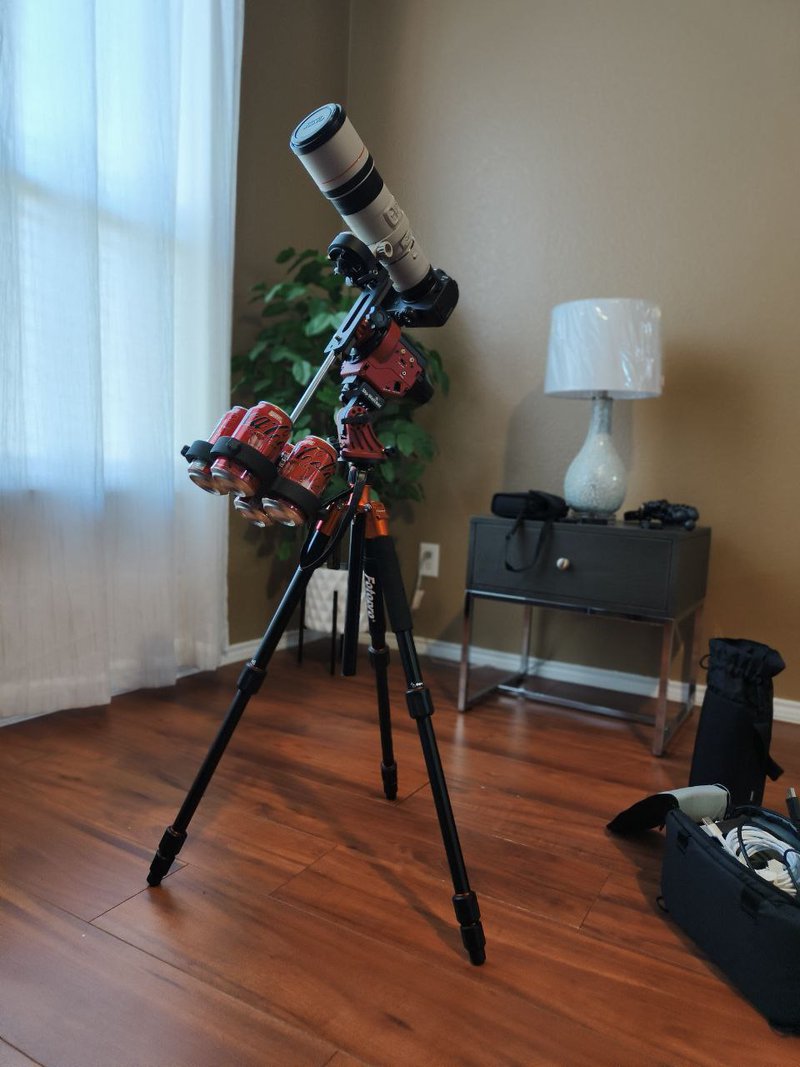
In order to allow burst shooting with Eclipse Orchestrator, I had to make a USB shutter cable similar to one described on the APT forum. Based on my tests the laptop and camera would be able to run the entire imaging sequence from the first contact to last on battery power.
I also had a GoPro camera borrowed from a friend to shoot a wide angle video of the eclipse and our group. I would have use all the cameras I own to shoot the eclipse if I didn’t have to travel with them across the world. Hence the pretty minimalistic setup.
Based on all the weather forecasts we decided that we would wake up very early (around 3 AM) and start driving east on Interstate 30 towards Arkansas. Our initial destination would be De Queen in Arkansas, but we would adjust our plans according to live satellite images and traffic information. It would be a long drive!
Eclipse day
As planned, we woke up early, packed the car and started driving. After Texarkana we got off the I-30 and headed north to try and get out from under the cloud cover. At the time De Queen had clear skies according to satellite images, but we opted to go more east, trying to anticipate what the situation would be at the time of the eclipse.
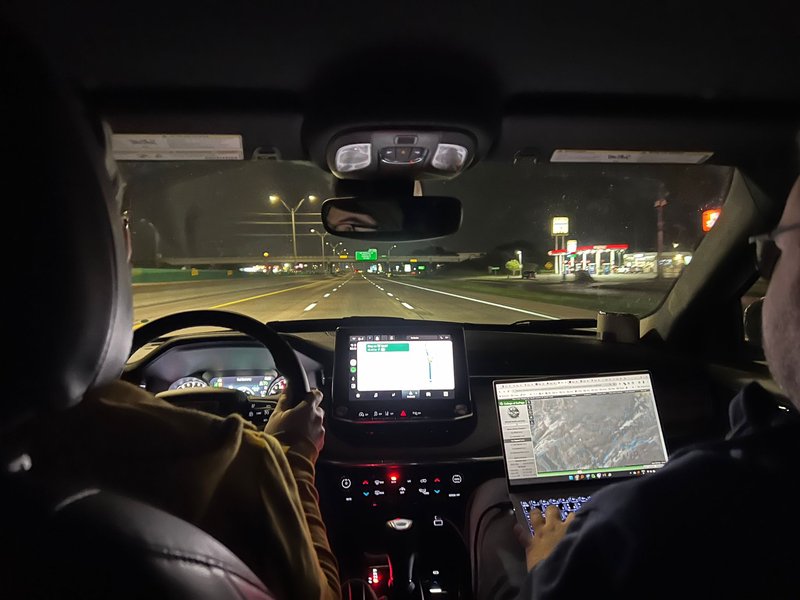
Eventually we decided to set up shop in Hot Springs, Arkansas. Apart from a few high-altitude cirrus clouds, the sky was clear, and we were also starting to run out of time. When we arrived in Hot Springs, we had less than 60 minutes until the start of the partial phase of the eclipse.
At our location first contact (start of partial eclipse) would happen 17:31:53 UT, second contact (start of totality) at 18:49:24 UT, third contact (end of totality) 18:53:02 UT, and fourth contact (end of partial eclipse) at 20:10:09 UT. Totality would last about 3 minutes and 40 seconds. We were about 30 miles from the middle of the path of totality, which would shave a few dozen seconds off the length of the eclipse, but that was an alright compromise.

We stopped at the Hot Springs Walmart parking lot, which was one of the dozens of Walmarts on our list of potential places to observe the eclipse. There were a few other eclipse enthusiasts waiting there already. We started setting up our gear next to the car. I finished getting everything ready just moments after first contact, and started the automated imaging sequence.
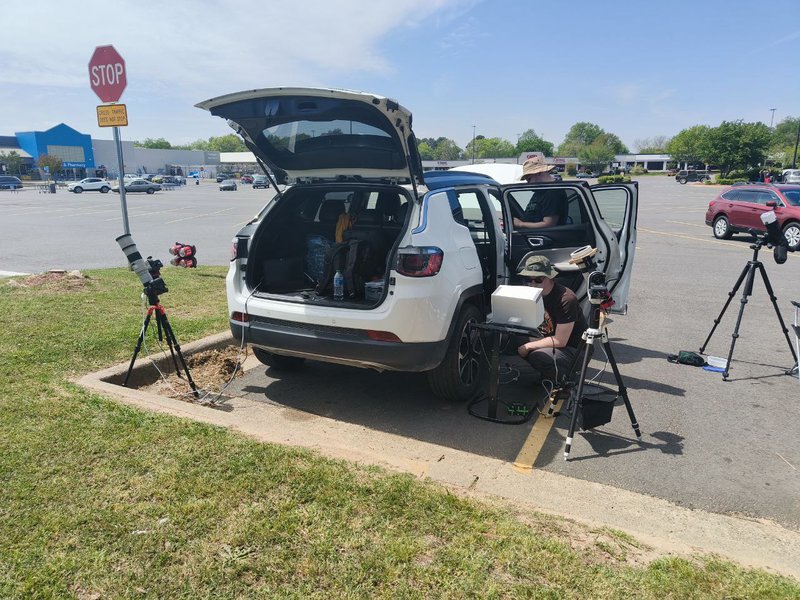
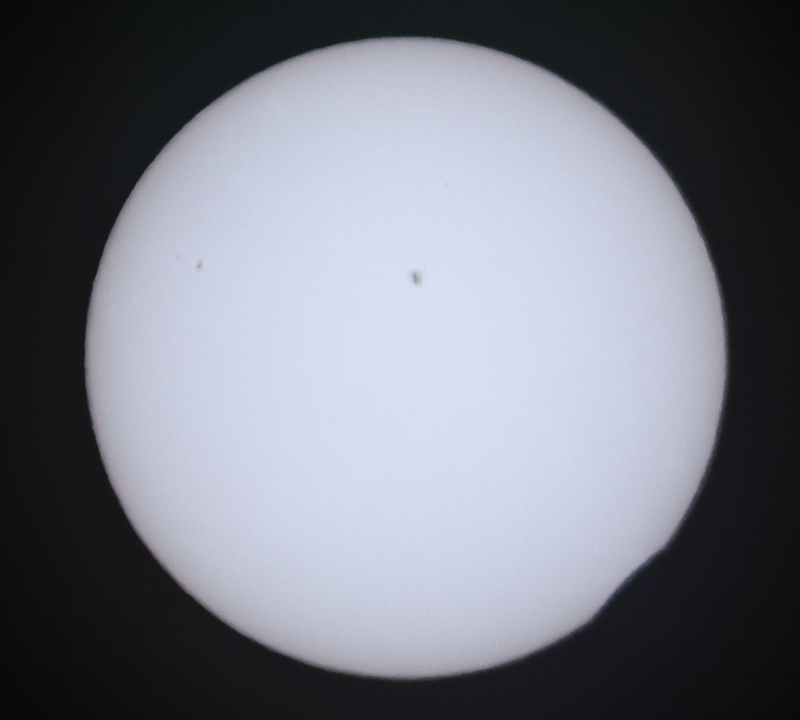
Now all that was left was to wait for totality, and do last minute checks to see whether everything is going as expected. During the partial phase you could see how shadows cast by trees started looking strange. Holes in the foliage act like pinholes, projecting an image of the partially obscured sun onto the ground. You could clearly see the crescent shape of the sun.
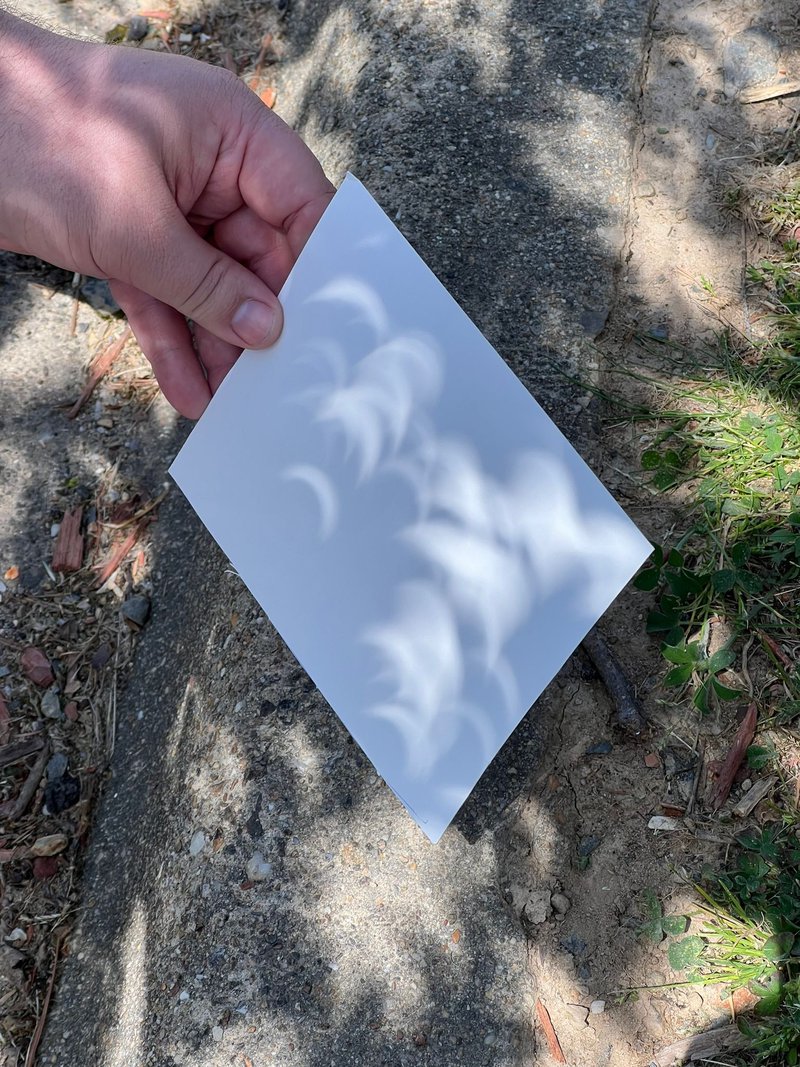
As the eclipse progressed, the temperature dipped. You could clearly feel it was cooler than before. A few minutes before the eclipse the lighting started to feel really odd. I remember the same sensation from the 2017 eclipse. It was a clear sunny day, yet the lighting was dim. And that makes sense, as almost 99% of the sun was blocked!
As totality was drawing near, things started changing fast. Eclipse Orchestrator on my laptop announced that the total eclipse is about to happen, which means I should take the solar filter off the camera lens. Once I took the filter off, my camera started shooting a long burst of images to capture the last seconds of sunlight. It got dark fast, and what was left of the sun turned into a tiny pinprick of light before disappearing completely.
Totality!
Suddenly I could see the wispy strands of the solar corona all around the moon. An extremely bright red dot on the bottom edge was also visible, and it turned out to be a solar prominence when observed with binoculars. People were cheering. All around me I saw the colors of sunset in the horizon.
I didn’t pay much attention to the behaviour of animals, as there were not many on a Walmart parking lot. But I can imagine they got quieter than usual!
Several bright planets were visible around the eclipsed sun. The most prominent were Venus to the right and Jupiter to the left. You could see many of the brightest stars too, similar to a summer night in Finland.
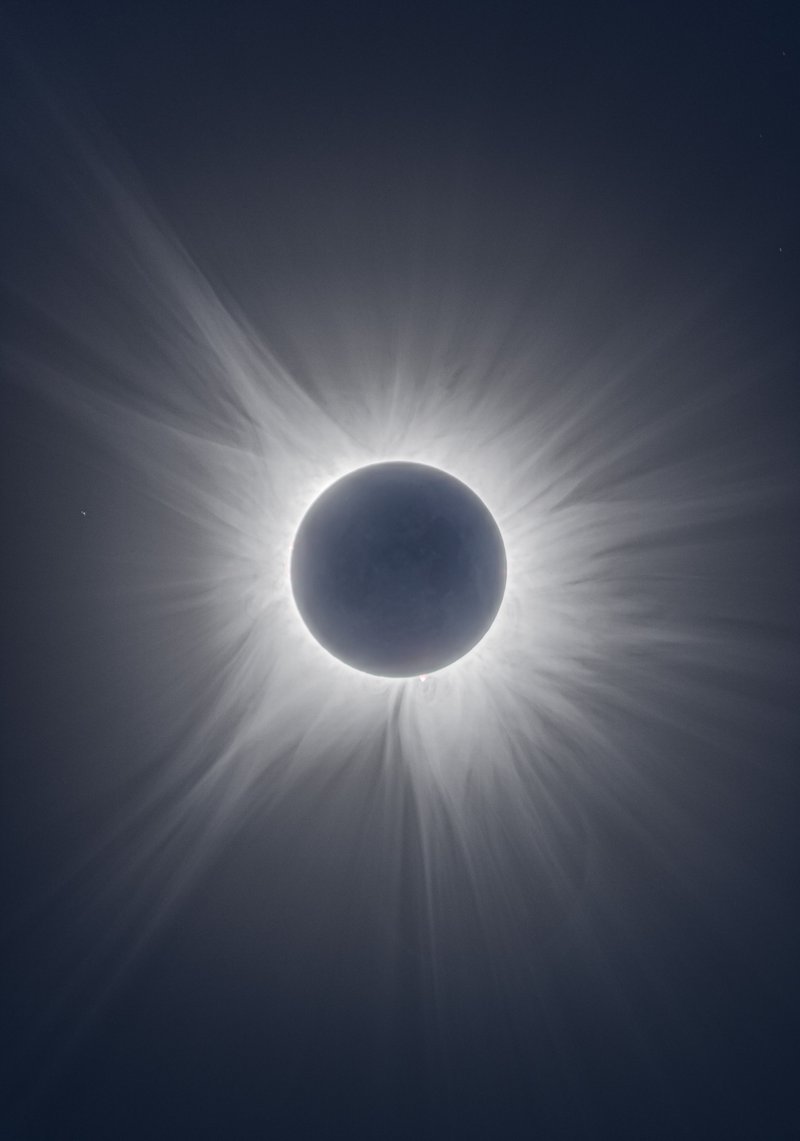
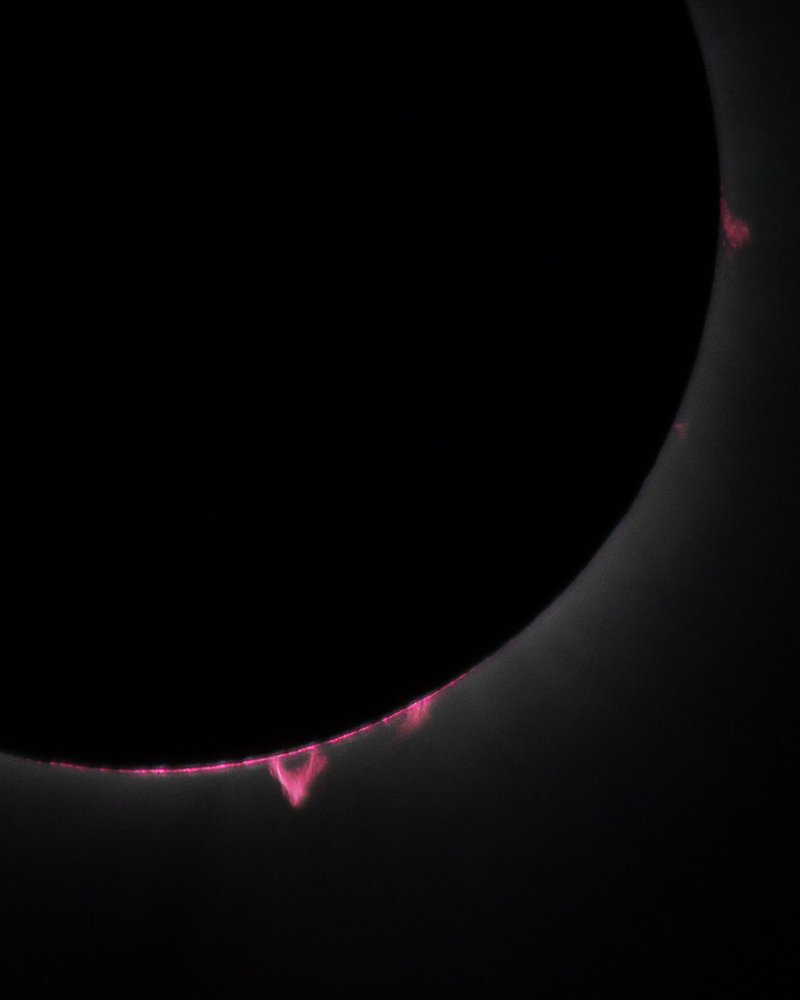
About three minutes later my camera starting shooting a long burst of photos again, signalling that the end of totality was near. 3 minutes and 40 seconds went by in a blink of an eye!
Suddenly the sun peeked out from behind the moon and there was daylight again. For a few seconds it is a marvellous sight. The light is tiny and sharp like a far away star, but as bright as the sun. A few minutes later you were hard pressed to notice anything out of the ordinary anymore, similar to a few minutes before the eclipse.
The corona image above is a high-dynamic range stack of 7 exposures of different lengths taken during maximum eclipse. I still have a hundred similar images more, but I need some extra time to try and combine them into one even more high quality composite of the corona.
I took burst shots of the second and third contacts mainly to capture Baily’s beads, but as an added bonus I could reconstruct a real-time video of the start and end of totality. You can see a combination of that and the GoPro video in the YouTube video embedded below.
After totality we still stuck around to capture photos of the partial eclipse. Once that was over, we packed our gear and went out to get something to eat. Then it was time to get on with the long drive back to Grand Prairie.
The drive back was mostly uneventful, except we were run over by a strong thunderstorm around Greenville, TX. At least it was strong by Finnish standards! We saw dark clouds and continuous lightning in the distance. Once we got closer, rain started very suddenly, and we could no longer see the road. Luckily we were coming up on an exit on the highway, so we took the exit and inched our way towards an underpass. We parked on the side of the road under the bridge with a dozen or so other cars to stay safe from any large hail. In hindsight we probably should have kept our radio on in case of tornado alerts. Later I learned there was a tornado watch in effect some distance south of the I-30.
Eventually the rain started to subside and we were able to continue our journey safely. As much as I would like to see a tornado some day, I am glad it was not there and then. After the rain we were treated to a beautiful sunset and some mammatus clouds.
Finally we reached our Airbnb in Grand Prairie. According to Google Maps we had driven almost exactly 1000 km that day, breaking my personal record of time and distance driven in one day!
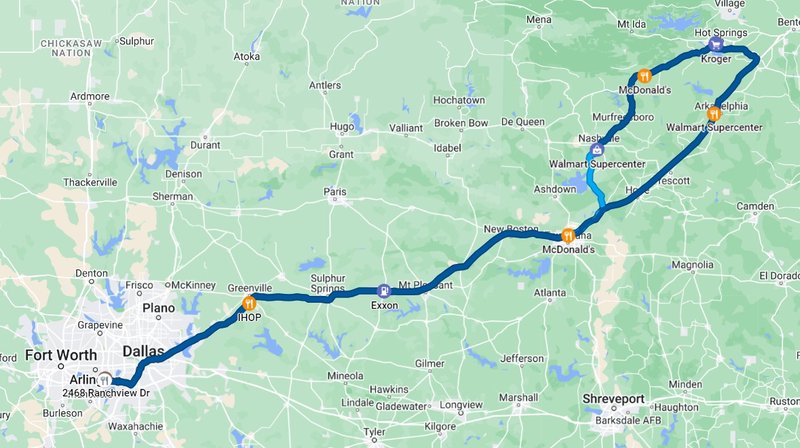
We still could not fully call it a day though, since we had to pack our bags for our early morning flight. After some frantic and not-so-meticulous packing we went to bed. I was woken up during the night by more intense rain and thunder, but eventually got some more sleep.
Flying to New York City
Once we got up at 3 or 4 AM to get to the airport, we got a message from American Airlines that our flight was cancelled. I am still not sure why, but most likely it was related to the intense thunderstorm.
Alternative flights offered by American Airlines were not feasible for us, so we started booking our own flight. Eventually we got an evening flight to LaGuardia, so we suddenly had one more day to spend in Dallas. After breakfast we drove to the city center and checked out the John F. Kennedy assassionation site on Elm Street. Then we walked around the city for a while. It was an odd place. Fancy modern skyscrapers mixed with old derelict buildings with broken windows.
We had not done any research on what to check out in Dallas, as we were supposed to be already halfway to New York City. After not finding anything really worthwhile on Google Maps and being pretty tired from the previous day, we drove to the airport and spent the rest of the day there.
We arrived in LaGuardia pretty late in the evening, and took a bus from the airport to the closest subway station. Ramadan happened to end exactly that night, which in hindsight makes sense as new moon was on eclipse day, so some neighborhoods in Queens were celebrating like crazy and the bus was stuck in gridlock for a long time. We did eventually make it to the subway which took us to our hotel in Manhattan.
The next few days were a blur of sightseeing. We walked 15-20 kilometers each day, checking out as many places as we could, including but not limited to the American Natural History Museum, Central Park, Wall Street, One World Trade Center Observatory, Intrepid Museum, Top of The Rock, Brooklyn Bridge and Chinatown.

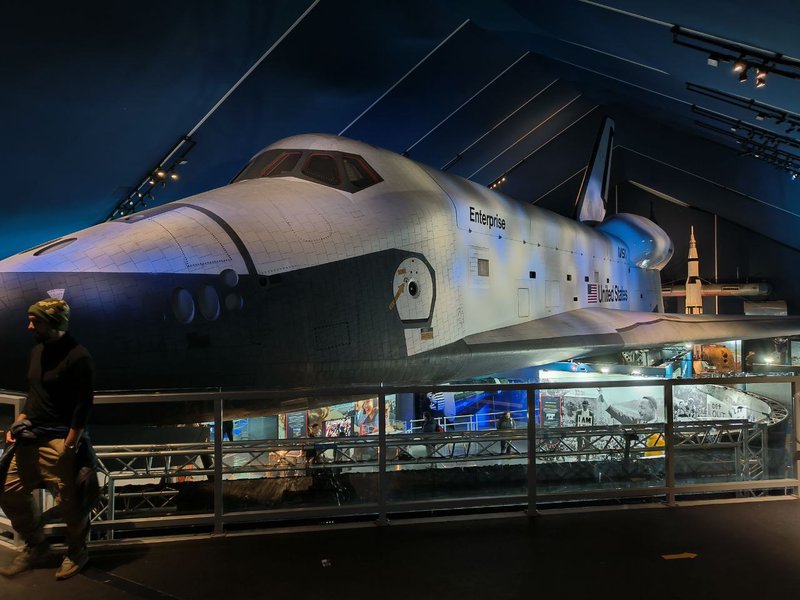

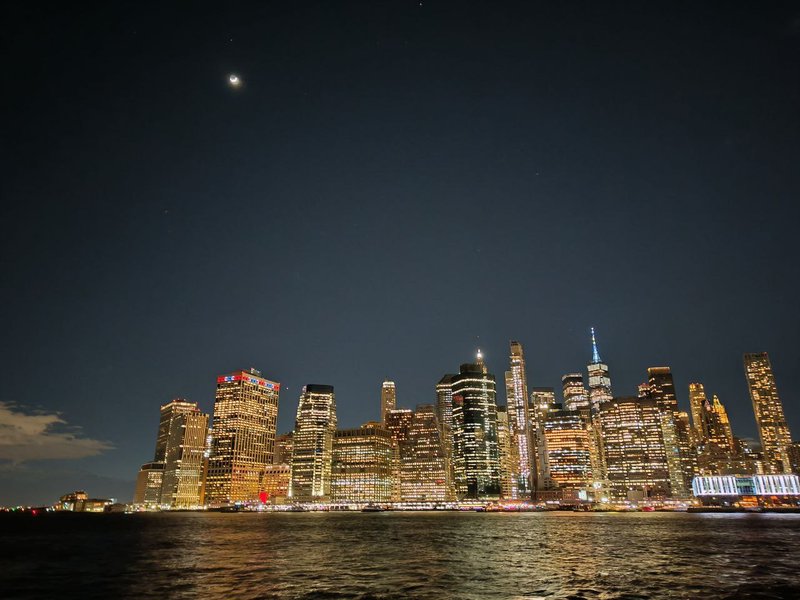
Saturday evening we flew from JFK to Helsinki. I couldn’t sleep much on the plane, which helped me with the jetlag a lot I guess. I was back in Finnish rhythm by Monday. Now all that was left was to process all the photographs and write this blog post. Despite having some finished eclipse photos in this post, I still have a bunch of plans what to do with the remaining ones, so stay tuned!